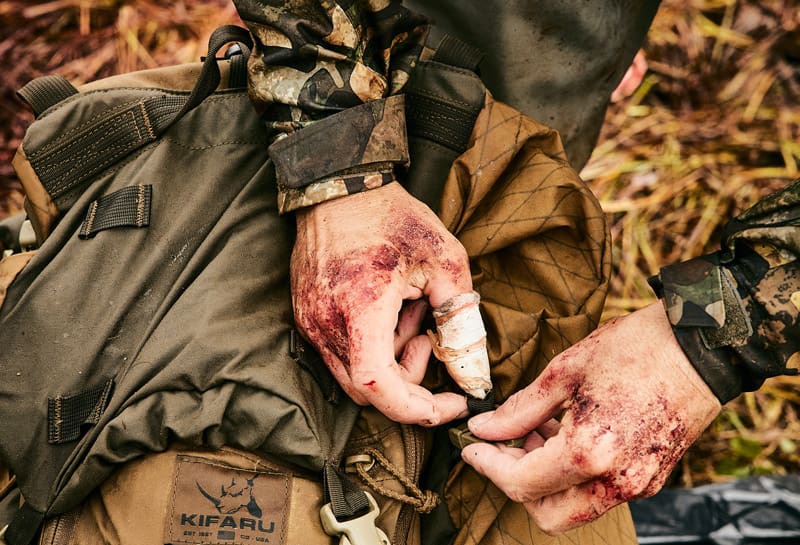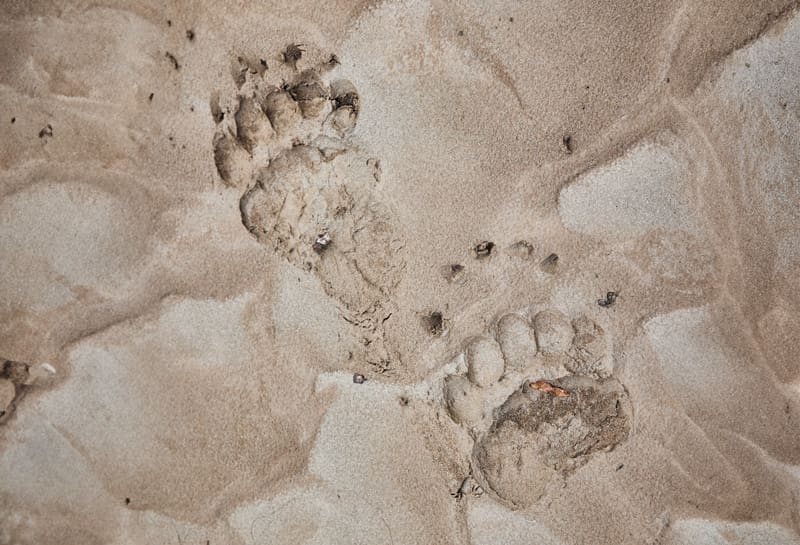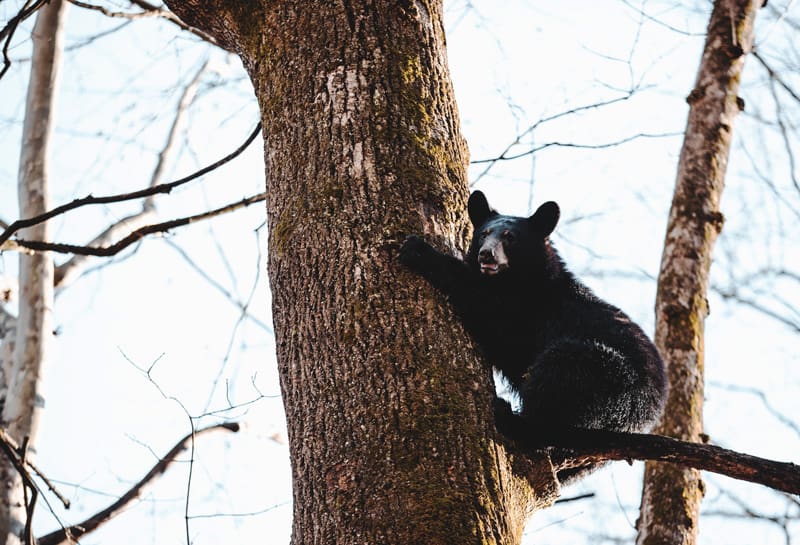Our Experiences in Bear Hunting
We’ve been on some great black bear hunts across the U.S., from the hills of West Virginia to the wide-open spaces of Wyoming. We’ve come up close with these amazing animals in places like Michigan, Montana, Alaska, and Idaho. These trips haven’t just been a great time, they’ve also enabled us to acquire a wealth of knowledge about black bears and where they live. Over time, we have developed a pseudo-formula, merging expertise and intuition, to identify the prime locations where bears thrive. Here are a few things we think every bear hunter should know.
One Key Characteristic of a Quality Bear Habitat
When considering the characteristics of quality bear habitats on a spring hunt, we believe proximity to flowing water is critical. Spring bears rely on water sources for a variety of reasons, including hydration and the availability of food. Habitats with access to flowing water are highly advantageous for bears and bear hunters are wise to keep an eye on them.
Another one of the key reasons for the importance of water sources in quality bear habitats is the early green-up areas. These are regions where vegetation starts to grow earlier than in other areas. Bears heavily rely on these areas for foraging as they provide a significant food source after the winter months. The proximity to water sources ensures that these early green-up areas are easily accessible for the bears. These will be places where you’ll likely find bear density to be a little higher.
When you’re out this bear season, keep an eye on flowing water. Understanding and prioritizing these characteristics is crucial for increasing your odds of shooting a legal bear.

Terrain and Food Sources
It’s also important to consider terrain and food sources when you’re out on a spring bear hunt. These factors greatly influence the likelihood of success while spring bear hunting.
First, identifying slopes that face south and east is crucial for early green-up, as these areas usually experience warmer temperatures and receive more sunlight. Bears are attracted to these slopes because they provide an abundant food supply in the form of fresh vegetation.
Avalanche shoots, steep drainages, and cliffy areas should also be on the radar when hunting bears. This rugged terrain offers shelter and protection for bears, making them popular habitats. Additionally, late spring is the prime time to find bears near elk calving areas, as they are drawn to these sites for an easy meal. When hunting coastal regions, keep an eye out on the shore for bears scavenging mussels. At the right time of the year, these areas are bear magnets.
Understanding the relationship between water availability and green-up can further aid in bear spotting. More water results in faster and more abundant vegetation growth, attracting bears looking to nourish themselves. Observing the presence of wild onions, shoots, glacier lilies, and other bear food is also important. These plants can serve as a reliable indicator of bear activity in the area.
Lastly, road hunting along logging roads, and keeping an eye out for clearcuts and burn areas, can be fruitful when searching for bears. Bears are known to forage in these areas, as they provide a variety of food sources, such as berries and young vegetation. Walking these areas can yield opportunities at a huge bruin.

Understanding Bear Movement
Understanding bear movement is complex. Each bear is somewhat unique and has its own personality. Unlike other animals like deer, bears do not necessarily have daily routines. You might find them hanging around a game trail one day and then miles away the next.
However, their movement patterns are greatly influenced by snow levels and seasonal changes. These factors play a significant role in their elevation preferences. Playing off these factors will greatly increase your chances of harvesting a mature bear.
Snow levels can affect bears’ accessibility to food sources, forcing them to move to lower elevations in search of better foraging opportunities. Similarly, seasonal changes can alter the availability of resources in different habitat types, causing bears to shift their movement patterns accordingly. As the green-up occurs, bears will generally stick around the newest growth. That means they’ll often move their way up a mountain as seasons change in the Spring.
Conclusion
Successful bear hunting is as much about understanding the environment as it is about skill with a rifle or bow. Our experiences across the United States have taught us the importance of recognizing quality habitats, which include access to flowing water, early green-up areas, and specific terrain features. Paying attention to things like water availability and food sources will greatly increase the likelihood of a successful hunt. Each bear’s behavior is unique, but by focusing on factors like snow levels, seasonal changes, and green-up progression, hunters can better predict bear locations. Whether you’re scanning south-facing slopes, navigating rugged terrains, or exploring near water sources, remember that the key to effective bear hunting lies in understanding and respecting these magnificent creatures and their habitats.
